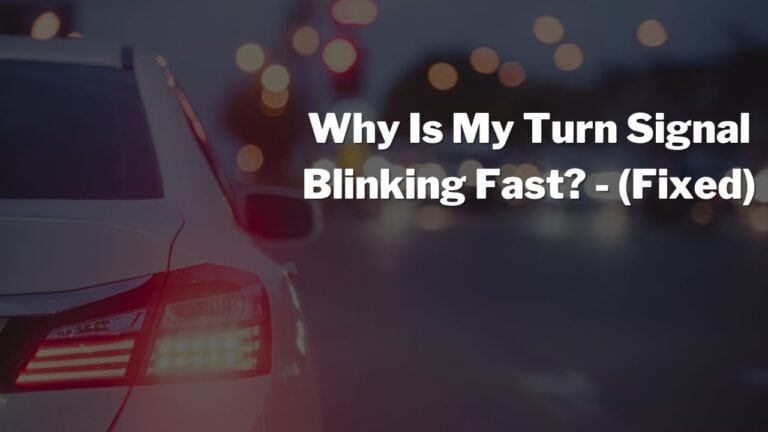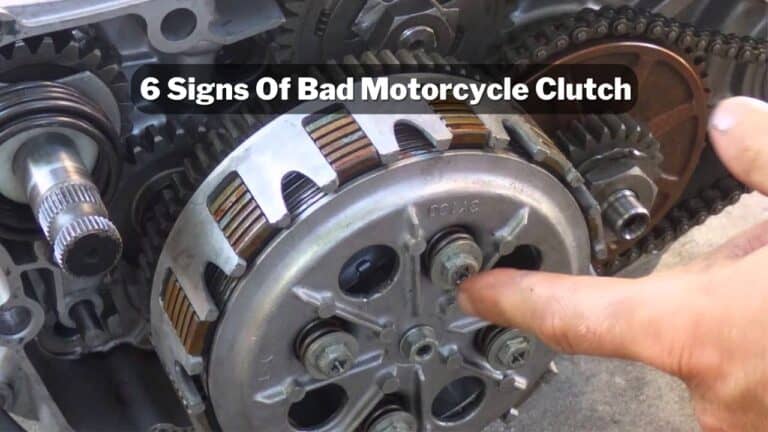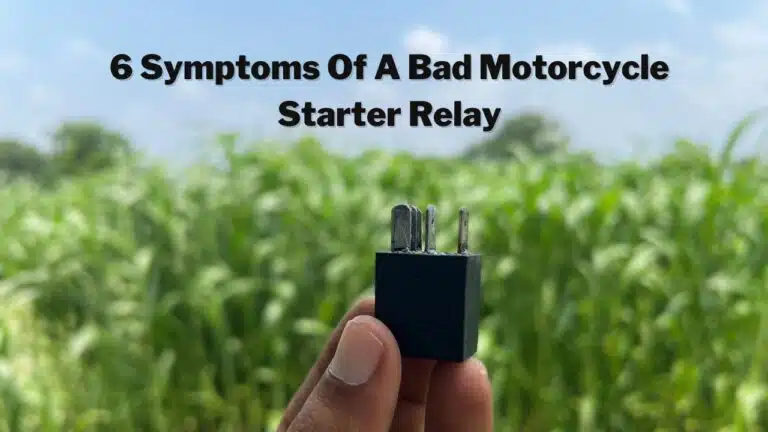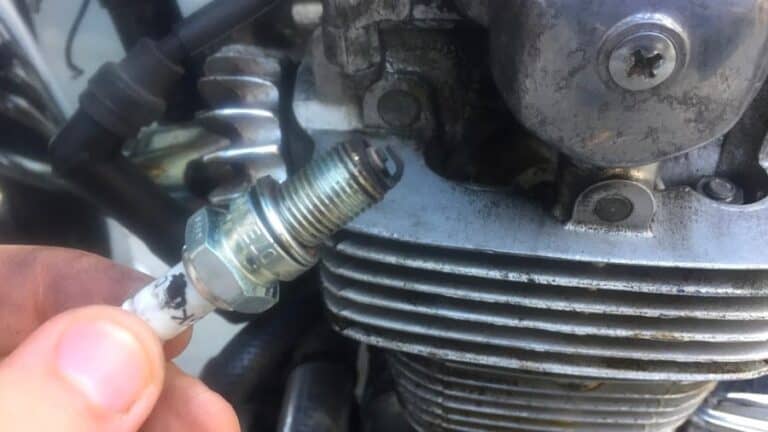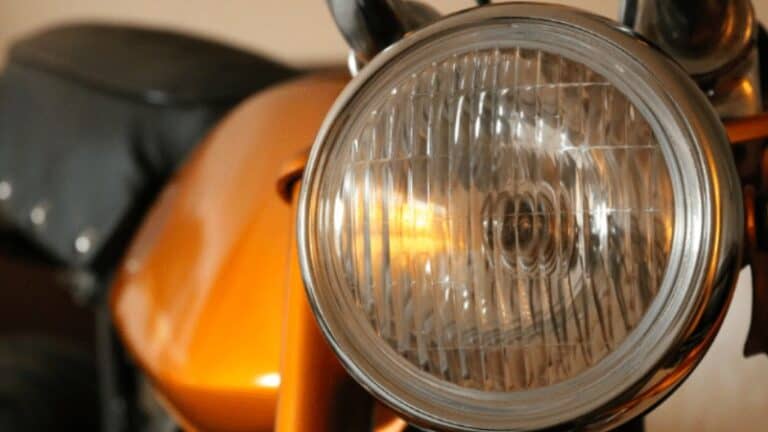What Is Clutch Drag On A Motorcycle? – (Engineer’s Explanation)
The clutch is a crucial component of an automobile transmission system. It’s part of the transmission that makes the ride smoother.
However, improper maintenance and irregular service result in clutch drag, leading to a bad riding experience.
Hi, I’m Kevin, and I aim to make your motorcycle ride smoother. This article is about clutch drag on a motorcycle.
If you’re facing difficulty in finding neutral gear or hard shifting, it’s a sign of a bad clutch. Read this guide to understand what clutch drag is, its symptoms, its causes, and how to fix it.
Read on to know more…!
Table of Contents
What Is Clutch Drag?
The function of a clutch assembly is to disengage and engage the driven shaft during gear shifting.
When the clutch lever is pulled, the driven shaft should be fully disengaged from the driving shaft. It helps in smoother gear shifting.
But, sometimes, the clutch doesn’t fully disengage when you pull the clutch lever, making the gear shifting harder. In mechanical terms, this is known as clutch drag.
If your motorcycle has a clutch drag problem, you’ll face difficulty in finding neutral. Clutch drag happens when friction plates don’t fully disengage with the drive shaft.
What Causes The Clutch Drag?
I hope you understand what clutch drag is. Now, let’s find out the reasons that cause the clutch drag on a motorcycle.
The common reasons your motorcycle faces clutch drags are inaccurate clutch cable adjustment (excessive free play), defective clutch wire, swollen friction plates, grooved clutch baskets, and burnt or sticking clutch plates.
What Are The Symptoms Of Clutch Drag?
A good transmission system brings effortless gear shifting and a smoother ride. But the clutch is also a part of your motorcycle system.
A small clutch, gearbox, or drivetrain fault will disturb the transmission system. So, clutch drag also affects your riding experience.
If your motorcycle has clutch drag problems, you’ll face the following symptoms–
- You’ll notice hard gear shifting.
- It’ll be difficult to find neutral.
- Your motorcycle won’t stop even if you pull the clutch lever.
- Your motorcycle will stall when you try to move it.
How To Fix Clutch Drag On A Motorcycle?
If your motorcycle doesn’t stop when you press the clutch lever, it’s a common sign of clutch drag. If you notice the above symptoms on your motorcycle, follow these solutions to fix the issue.
1. Adjust Clutch Cable Freeplay

There should be 10 to 15mm free play in your clutch lever for smoother shifting, but over time friction linings wear, which requires adjustment.
The excessive free play in the clutch cable is the main cause of clutch dragging. Adjusting your motorcycle cable free play every 3000 to 5000 miles is recommended.
Most motorcycles and dirt bikes have an adjustor knob and a locknut to adjust the clutch cable free play. So, loosen the locknut and adjust the free play.
Generally, clutch dragging will be fixed by adjusting the clutch cable free play. If it doesn’t fixes, head over to the next solution.
2. Top-Up Engine Oil
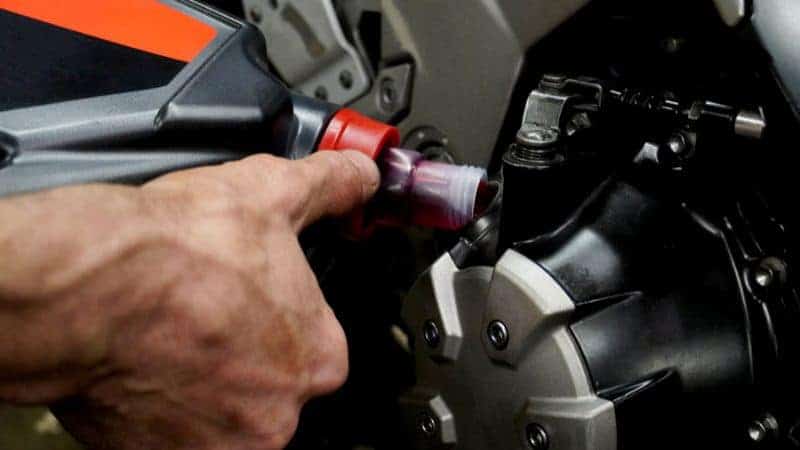
All street motorcycles use a wet clutch system, and engine oil keeps it lubricated and cool. But, if your motorcycle’s oil level is low, the clutch plates overheat and stick with pressure plates, which results in clutch dragging.
So, check the oil level and top-up if required. Ride your motorcycle for a few miles and see if the problem is resolved.
Helpful Guide: Can You Mix Two Different Oil Brands in Motorcycles?
3. Replace Clutch Plates
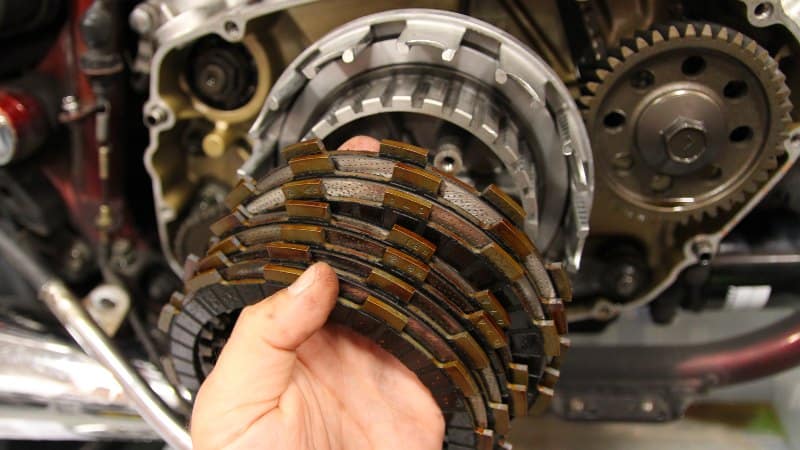
Due to continuous wear, the clutch plates overheat, and friction linings swelled. The swollen linings don’t fully disengage the clutch plates.
To fix this, you need to replace the clutch plates. I recommend taking your motorcycle to a mechanic garage for clutch plate replacement.
4. Replace the Clutch Basket
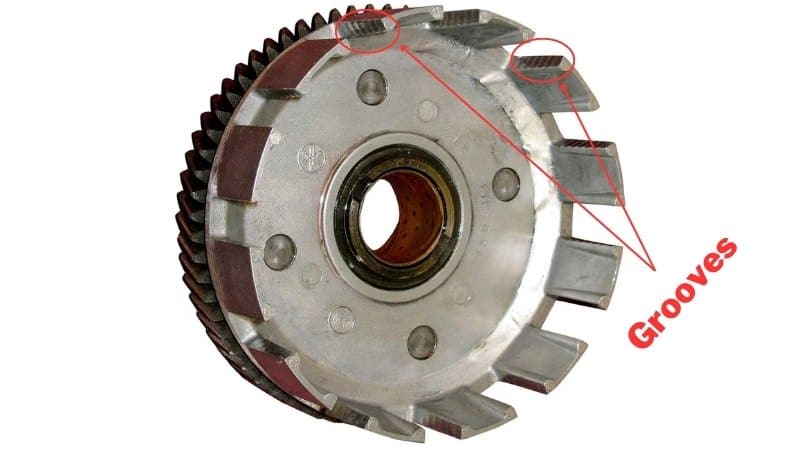
A motorcycle clutch system has a clutch basket (connected to the crankshaft) and an inner hub (connected to the gearbox) that rotates independently when the clutch lever is pulled.
The clutch plates have outer teeth that lock with the clutch basket, and steel plates have inner teeth that lock with the inner hub. Due to frictional force, these two plates act as a single unit and rotate the inner hub.
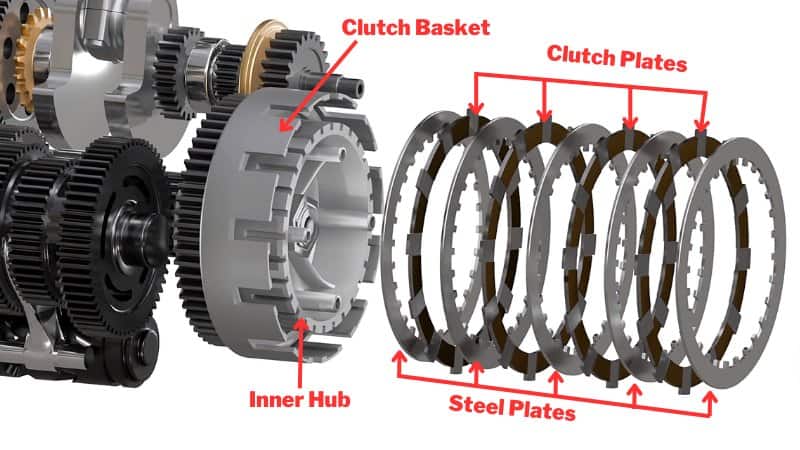
The clutch plates apply intermittent force on the basket, which creates smaller grooves. These grooves on the clutch basket restrict the plate’s axial movement and don’t disengage completely when the lever is pulled. Due to partial engagement, your motorcycle faces a clutch drag problem.
You must replace the whole unit if grooves are formed on the clutch basket. You can go to the nearest mechanic garage and replace the clutch assembly with a professional.
Is Clutch Drag Bad?
Clutch drags indicate that your clutch assembly is not fully disengaging when pulling the lever. This results in overheating of the engine, which can damage other components.
So, clutch drag is bad for your engine, and you’ll face hard shifting, difficulty finding neutrals, grinding sound, decreased mileage, and frequent oil burn.
Conclusion
Adjusting the clutch cable tension fixes the clutch drag problem in most cases. However, if it doesn’t go away by cable adjustment, you may need to open the engine and replace the clutch assembly.
I hope this guide helped you in fixing your problem. Keep visiting here for more motorcycle-related problems, and share your valuable feedback and topic ideas that you want me to cover on Motorcycle Ninja.

